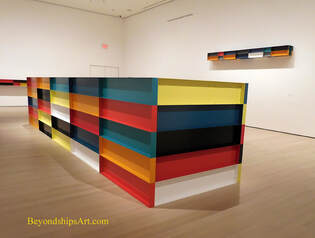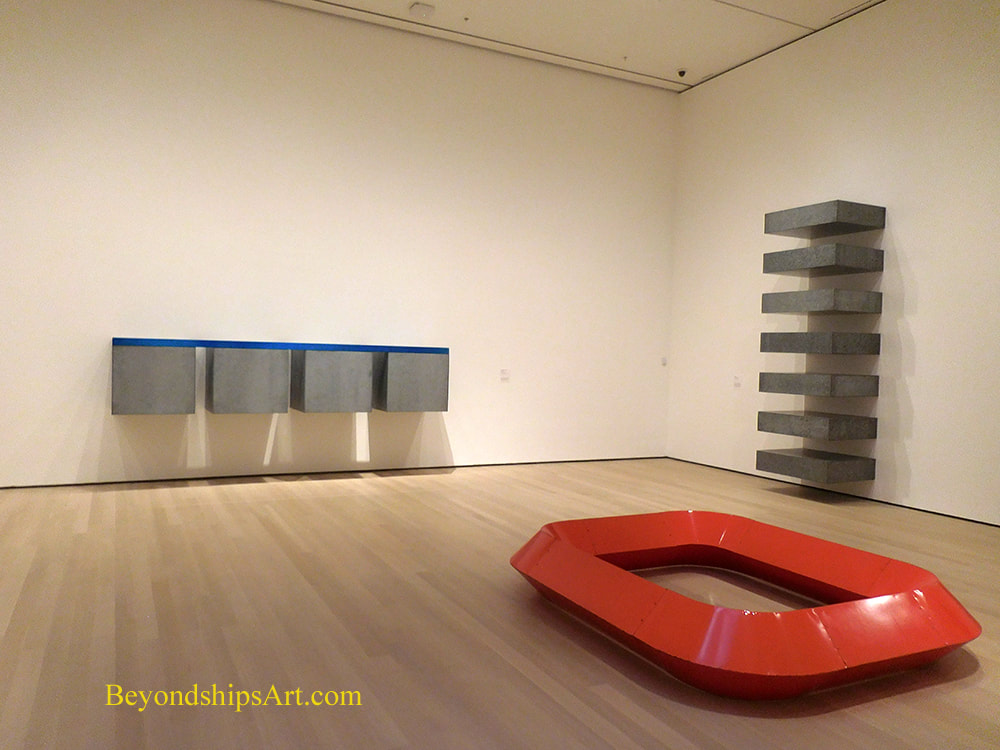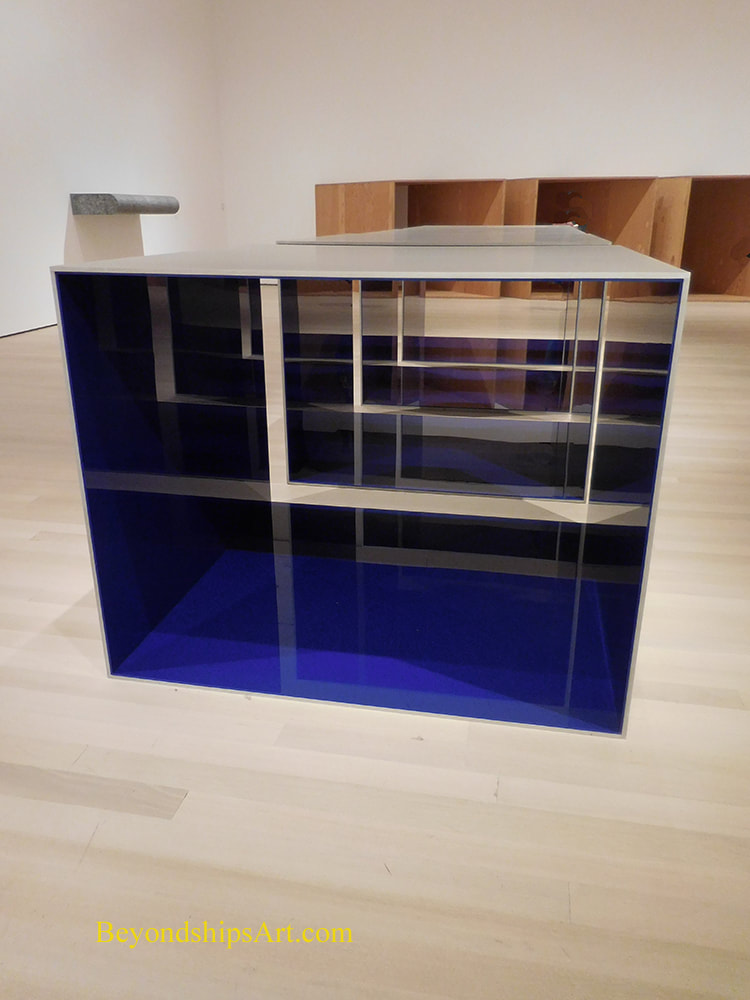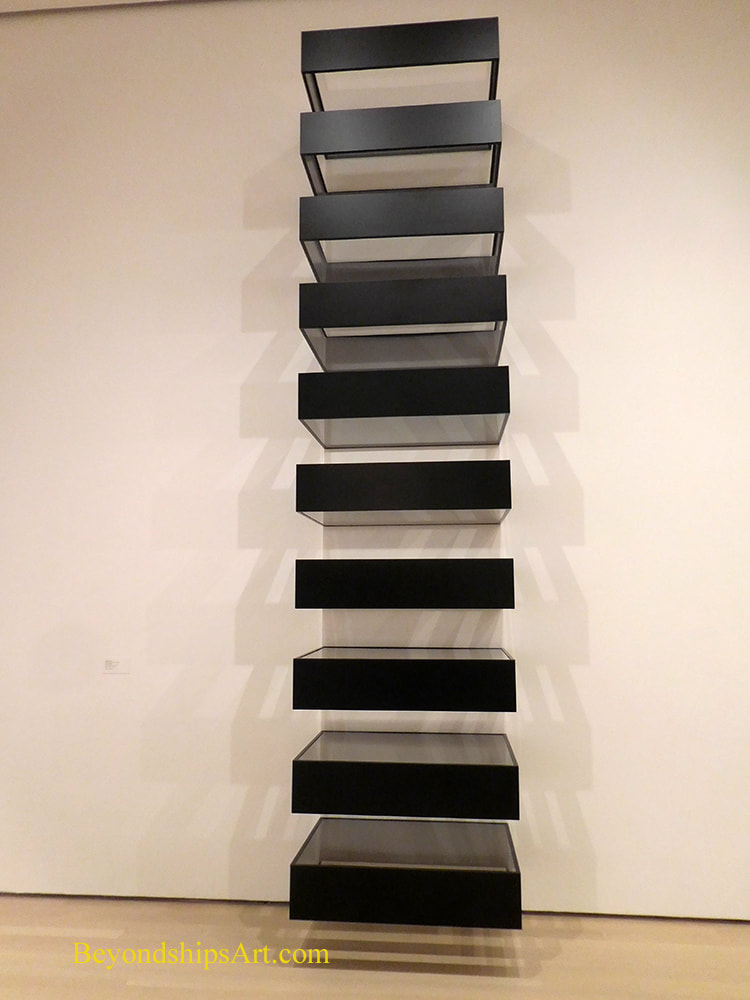ART REVIEW:"Judd"
“Judd” at the Museum of Modern Art in New York City is a large retrospective of the work of Donald Judd, a leading figure in the Minimalist movement in the second half of the 20th century.
Born in Excelsior Springs, Missouri, Judd came east to study philosophy, first at the College of William and Mary and then Columbia University. He shifted focus to art history for his graduate studies at Columbia. At the same time, he was taking art classes at the Art Students League in Manhattan. To generate income, he wrote art reviews for a number of major publications. Judd began his art career as a painter. He viewed traditional European artistic values as producing illusion and a false representation of space and so his focus was on abstract work. By 1962, Judd had become interested in three dimensional art - - not traditional sculpture but the production of objects that were not intended to be a representation of something else or to have metaphorical meaning. These “real objects” were complete in and of themselves. At first, Judd made his objects himself. However, in 1964, he visited an industrial sheet metal company located in his Manhattan neighborhood and discovered that the company could produce objects based upon his drawings. This arrangement enabled him to create objects of a much larger scale and objects that were more polished than the objects that he had been fabricating himself. During the course of his career, Judd limited his work to a small vocabulary of objects. He produced similar looking “boxes, stacks and progressions” that appear over and over. The various iterations were made with different industrial materials such as plywood, Plexiglas and sheet metal. Colors varied, reflecting either the natural color of the material or the application of paint through industrial methods. Unlike traditional art where the painter's brushstrokes or the sculptor's fingerprints show their origin, Judd's objects betray no evidence of human involvement in their production. The objects are geometrical shapes. For the most part, they are cubes and rectangles with very few curves much less organic forms. Their visual impact is derived from their placement in relation to each other and/or to the room in which they are contained. It could be argued that a line of boxes sitting in a warehouse are just as much art as Judd's objects. However, the difference is the artist's intervention. In a warehouse, the boxes were created to hold other objects and are arranged to accomplish some extrinsic purpose such as loading or storage. Judd's objects serve no purpose other than art and were intentionally arranged by the artist for the purpose of creating a work of art. The fact that these objects were not made by the artist has led some critics to question whether they are indeed art. However, old master paintings were often produced by studio assistants working according to the master's drawings. Similarly, traditional metal sculpture was often produced by a foundry based upon a model made by the sculptor. Thus, the fact that Judd's objects were produced by industrial firms pursuant to Judd's drawings and specifications does not disqualify these objects from being art. Furthermore, as Judd pointed out, how a work of art is produced is irrelevant. It is only the end product that matters. Nor does the fact that the objects were not intended to have metaphorical meaning disqualify them as art. Once a wrok of art is finished, the artist's opinion as to its meaning is no more valid than anyone else's opinion. To illustrate a viewer might see Judd's objects as reflecting the lack of humanity in modern society. Thus, it can have an intellectual meaning if you want it. However, even assuming you see no meaning in it, the works provide a visual experience that is both sensory and challenging intellectually as well as emotionally and that is very much what art is about. |
Two of the themes Judd returned to time and again - - boxes (above) and stacks (below).
|
Art review - Museum of Modern Art - "Judd"


